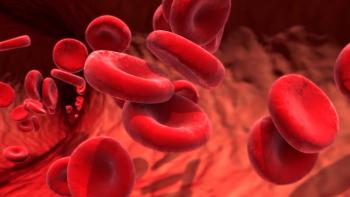
Laser Surgery for Endometriosis
To interpret the literature describing the results of surgery for endometriosis, a clear understanding of the evolution and limitations of the various techniques is necessary. Up to the end of the 1970’s, minimal and mild endometriosis was destroyed endoscopically by heat application (endothermia) and by unipolar or bipolar coagulation. Treatment of more severe endometriotic disease was mostly radical by hysterectomy, often leaving some rectovaginal endometriosis which has not been fully recognised before 1989.
1 History of surgical techniques
To interpret the literature describing the results of surgery for endometriosis, a clear understanding of the evolution and limitations of the various techniques is necessary. Up to the end of the 1970’s, minimal and mild endometriosis was destroyed endoscopically by heat application (endothermia) and by unipolar or bipolar coagulation. Treatment of more severe endometriotic disease was mostly radical by hysterectomy, often leaving some rectovaginal endometriosis which has not been fully recognised before 1989. In younger women adnexectomies, rarely cystectomies, and anterior resections of the rectum were performed. This period has focused on infertility associated with typical and cystic ovarian endometriosis whereas deep endometriosis – unless very severe, large and painful – was not recognized. We may assume that all publications of this period were “contaminated” by some 5 to 20 percent of undiagnosed and thus untreated deep endometriosis.
In the late seventies and the early eighties microsurgery was introduced, emphasizing gentle tissue handling and careful destruction of superficial endometriosis by bipolar coagulation or resection and removal of cystic ovarian endometriosis followed by reconstruction of the ovary.
From 1986-1987 onwards, the concept of minimal and/or non-pigmented endometriosis was introduced.5 This has caused an important shift in the reported incidences of endometriosis, which depend on recognition and awareness. This increasing recognition of endometriosis has resulted in a progressive shift of women, who previously were classified as “normal” to women classified as having minimal endometriosis. To recognise this shift is important for the interpretation of results of surgery, since the group of ‘normal’ women, comprised before 1985 variable numbers of (unrecognized and untreated) women with minimal endometriosis. Simultaneously the severity of the disease in the groups of women with minimal/mild disease progressively decreases, since diluted with women with subtle endometriosis only. The bias of non-recognition of deep endometriotic disease still persists.
After the introduction of endoscopic surgery, several treatments of cystic ovarian endometriosis have been proposed. The removal of the cyst wall by stripping followed by suturing or gluing of the ovary is technically similar to the surgery performed during the microsurgery period. This has been challenged by destruction of the cyst wall, by laser vaporisation, or by bipolar coagulation. This destruction of the cyst wall, however, is poorly defined and ranges from focal treatment of lesions, to superficial destruction of the whole area, to much deeper destruction. These different techniques have been poorly compared and until today differences in opinion persist. It should be realised, however, that differences in technical skills in endoscopic surgery, often are fundamental to these discussions as is suggestion of a combined endoscopic/microsurgical approach.33.
In the nineties, deep endometriosis has been recognized increasingly during laparoscopic surgery34;35, or by clinical examination during menstruation36. “Resection of deep endometriosis” comprises techniques which vary from debulking, to complete discoid excision to resection-reanastomosis of the rectum with large margins mimicking oncologic surgery. These differences are rarely stated clearly in the literature, thus making interpretation difficult. Another important and growing bias is the severity of deep endometriosis reported. In some series deep endometriosis comprises mainly lesions larger than 1 cm2 whereas in other reports lesions are limited to somewhat deeper typical lesions in the uterosacral ligaments. It therefore becomes mandatory that all reports on deep endometriosis clearly define volume and depth of the lesions operated upon.
In conclusion, in order to interpret correctly the data reported in the literature it is important to be aware of the existing biases. (1) The awareness of subtle endometriosis has increased tremendously the apparent prevalence of endometriosis thus decreasing the severity in the group with minimal endometriosis. Simultaneously the normal group of women has changed (2) the awareness and scrutiny of diagnosis of deep endometriosis will determine the incidence of ‘unrecognized’ deep endometriosis in the minimal-mild groups. (3) Reporting depth of penetration and volume of deep disease is necessary to judge whether the series comprise mainly large or mainly small lesions, the smaller ones just fitting the definition of 5mm. (4) The size of cystic ovarian endometriosis, the presence of adhesions, the pathological confirmation of the disease and the technique used, is essential to compare series of cystic ovarian endometriosis.
1. CO2 Laser surgery versus electrosurgery
CO2 Laser surgery and electro surgery differ by the energy characteristics and by the mode of application.
The CO2 laser energy is almost completely absorbed by water. The effect thus is a very superficial heating, and provided sufficient energy, instantaneously heating to temperatures inducing an explosion, i.e. vaporisation of tissue, with little thermal spread, i.e. less than 100µm. In order to be a precise cutting instrument the laser beam has to be focused on a small area. Theoretically spot diameters of less than 0.5 mm can be achieved, but this requires, a perfect lens and working at the exact focal distance. In addition the CO2 gas in the laser channel of the laparoscope is heated by adsorption of the laser beam and these results in widening of the spot diameter an effect known as blooming. Therefore cooling continuously the CO2 of the laser channel e.g. with an high flow insufflator37 or using a CO2 isotope to generate the laser beam are mandatory for a quality cut. Smoke production during vaporisation is so important that continuous evacuation is necessary. The most important difference with electrosurgery is that the energy output is constant of time: therefore the depth of cut is always constant, only depending of the speed of moving the laser beam over the tissue.
Electrosurgery has the advantage of being more versatile, resulting in heating and coagulation below 200V, in sparking with local heating of the air and the adjacent tissue and thus vaporisation above 200V. Higher voltages, will in addition heat the tissue causing coagulation i.e., damage. This was known in the past as blended current in electrosurgical units without voltage stabiliser. The quality of the cut thus is voltage dependent, and at exactly 200 V, i.e. with minimal sparking, the quality of a CO2 laser and of an electrosurgical cut is comparable with similar limited tissue damage. The most important difference is that the energy output of electrosurgery is not constant since it essentially depends on the impedance of the tissues and on the area of contact between the electrode and the tissue. At higher output settings the intensity of the current will be limited only by the impedance thus being small or higher according to the area of contact, i.e. the depth of cutting. Electrosurgery thus easily cuts to a constant depth notwithstanding an irregular surface. Limiting the energy output, is not realistic, unless with a needle electrode in microsurgery, since any increase in contact area, will result in a drop in voltage and thus will stop cutting and start coagulation.
Another difference between laser and electrosurgery is the angle of access to the tissues: the laser beam used through the laparoscope will have an almost horizontal access to the rectovaginal septum. Energy used though the secondary ports will have a more vertical line of access, and this difference increase when secondary ports are introduced lower in the abdomen.
Finally almost all lasersurgery for endometriosis can be performed with 2 secondary ports only, placed low in the abdomen, i.e. within bikini limits. For electrosurgery, generally 3 secondary ports are necessary, which for ergonomic reasons have to be placed higher in the abdomen.
2. Minimal and mild endometriosis
2.1 Methods of destruction
Ideally these endometriosis lesions are vaporized or excised with a high power CO2 laser. We consider this the method of choice since this treatment rapidly removes all the endometriosis and not more than the endometriosis, leaving a minimal amount of necrotic tissue. The choice between vaporization and excision depends on the size of the endometriotic lesion, larger lesions being excised more rapidly. This method takes full advantage of the characteristics of a CO2 laser as a bloodless and precise cutting instrument, with little thermal damage to the surrounding tissue.
Alternative methods of destruction are bipolar coagulation, endothermia and, sharp excision. The first method is less adequate than laser vaporization/excision for typical lesions, since depth of infiltration is difficult to assess by inspection and palpation only. Moreover, the amount of necrotic tissue left behind is more important, which could increase the amount of postoperative adhesions. Sharp excision together with monopolar electrosurgery is theoretically equivalent to CO2 laser excision. It balances between extensive prophylactic coagulation, which results in more tissue damage, and no prophylactic coagulation which often is associated with capillary bleeding and poor visualization.
2.2 Subtle lesions
If, subtle endometriosis is a natural condition occurring intermittently in all women29;38, it is logic to postulate that treatment is not necessary since it is not a disease, since it will disappear spontaneously and can reappear later at another localization. Anyway subtle endometriosis never has been shown to be a cause of infertility or of pain. From a surgical viewpoint, however, this is an academic discussion, since vaporization of these subtle lesions, is so easily performed without risks, that it might be unwise to leave the possibility that some of these lesions would be or become more invasive or aggressive.
2.3 Typical lesions
It is uncertain whether it is useful to treat typical endometriosis to prevent progression. To demonstrate this in randomized controlled trials can be argued to be clinically irrelevant since destruction is so easy. Scientifically it might moreover be practically impossible to achieve. Considering a 60% prevalence of minimal-mild endometriosis with a progression to severe disease in some 10% after 5 years, it would require a randomized trial of hundreds of patients over many years, which is unrealistic.
Typical lesions are associated with pain, and in a series of observational studies and in 2 RCT it has been shown that destruction of typical lesions results in significant better pain relief than in a control group. These studies moreover confirmed the important placebo effect of some 25% lasting for at least 6 months. The activation of spare nociceptors39;40 with inflammation and the observation that these lesions are specifically painful when stimulated41;42 seem important to understand the pathophysiology.
The usefulness as an infertility treatment remains unclear. During the late seventies an association was shown between endometriosis, luteal phase insufficiency, unexplained infertility and the luteinized unruptured follicle syndrome (LUF)43-46. To understand why this association has been questioned later, it might be important to realize the shift that had taken place in the groups of women reported by the recognition of subtle nonpigmented lesions47-50. Studies in the baboon confirmed experimentally that endometriosis was associated with the LUF syndrome, that the LUF syndrome was recurrent and that the LUF syndrome diagnosed by inspection of the ovaries, correlated with the absence of ovulation51. Recently, the Endocan study showed in the human that treatment improved fertility52. This study, however, was not blinded, and it can be argued that by telling women that they had endometriosis indeed increased anxiety levels and LUF syndrome and thus decreased fertility rates. The absence of effect observed in the smaller Italian study, and the fact that a 30% cumulative fertility rate in the treated group of the Endocan study was similar to previously reported fertility rates in control groups; support this view.
3 Cystic ovarian endometriosis
3.1 Pitfalls of diagnosis
The treatment of cystic ovarian endometriosis remains hampered by misdiagnosing a cystic corpus luteum as a cystic ovarian endometrioma. To the best of our knowledge this problem has not been addressed adequately. Even if only women with pathologically confirmed cystic endometriosis were included, these data do not permit to judge to what extent cystic corpora lutea had been operated upon.
A clinical history of the persistence of a cyst under oral contraceptives or LH-RH agonists is unreliable for diagnosing cystic ovarian endometriosis: over the years we have operated several women with a “chocolate cyst” on ultrasound, persisting for more than 4 months which turned out to be a cystic corpus luteum. We are fully aware that this clinical observation does not allow any conclusion about prevalence. This is consistent with the observation that ovarian cysts can develop during ovarian down regulation53. Imaging, such as ultrasound and CAT scan has sensitivity of 70% to 80% and a specificity of 90% - 95%54-58 58. This is a valuable method of diagnosis helping in the clinical management. It will, however, not prevent errors of judgment during surgery. Ovarian flow measurement does not seem to improve substantially59, specificity or sensitivity.. CA 125 in chocolate fluid has reported to have a sensitivity and a specificity of nearly 100%60;61;61. Unfortunately until a rapid test becomes available to make the diagnosis during surgery, this remains theoretical.
Our clinical rule of thumb is that, since cystic ovarian endometriosis is so strongly associated with adhesions18, a “chocolate cyst” without adhesions has a high probability of being a cystic corpus luteum whereas the presence of severe adhesions especially in the fossa ovarica enhances the suspicion of endometriosis. This, together with the inspection of inside of the cyst by ovarioscopy62 or by inspection with the laparoscope63, will help to make a correct judgment in the majority of women. Those with a flattened appearance and red or red and brown mottled ridges generally were endometriosis and those with a dark uniform base, an intracavitary clot, or a yellowish rim generally were corpus lutea or albicans
3.2 Physiopathology
The physiopathology of cystic endometriosis is not entirely understood. It is attractive to consider that many cystic ovarian endometriosis originates from invagination of superficial implants64. Especially when the ovary becomes adherent to the pelvic wall by endometriotic implants, it seems logic that a “pseudocyst” is formed by the accumulation of old blood and debris, thus stretching the ovarian capsule over this cyst65;66;66. This phenomenon of invagination and stretching of the ovarian capsule can explain that the inside of the cyst wall is not always entirely covered by endometriosis, which is rather localized as focal endometriotic spots. It thus seems logical to postulate that only these endometriotic spots should be destroyed, and that removing the cyst wall is equivalent to removing the ovarian surface. This mechanism of invagination and stretching of the ovarian capsule does not preclude that some cysts have a different origin. A careful histology of the cyst wall moreover reveals that endometriotic glands can be present in the “so called” cyst wall up to a depth of at least 5-6 mm. Whatever the aetiology is, most of the ovarian cysts are clonal in origin, as was repeatedly demonstrated.
3.3 Surgical Pragmatism of Size
From a surgical point of view, the size of the ovarian cyst is the most important. For smaller cysts (< 5 cm) the cyst wall can generally be stripped easily from the ovary. This process seems to follow a natural plane of cleavage, confirmed indirectly by the fact that it is associated with little bleeding. For cysts larger than 5 cm diameter, the discussion whether the cyst wall should be removed or destroyed, or whether a focal treatment will be sufficient is purely academic. Indeed in these women with a large cyst the remaining ovarian rim will be so thin that resection becomes either technically impossible or practically unrealistic since minimal or no ovarian tissue will be left. Also the extensive vaporization of these very large areas is unrealistic.
3.4 Methods of Treatment
Aspiration and rinsing of cystic ovarian endometriosis has been attempted but the recurrence rate is high67-69. Ultrasound guided aspiration will moreover result the next day in chocolate in the pelvis when we attempted to do so (unpublished data), which might increase adhesion formation70 although it was shown that chocolate fluid does not induce adhesions when injected intraperitoneally in mice71.
For smaller cysts, i.e. less than 5 cm diameter, the method of stripping the cyst from the ovary as initially described by the Clermont Ferrand group is our method of choice7273. It is rapid, technically easy, and complete treatment also when invading glands would be present. Following adhesiolysis, drainage and rinsing, we incise with the CO2 laser the ovarian capsule around the cyst opening. Once the plane of cleavage is found, the cyst wall is easily stripped from the ovary. The laser is used to assist cleavage in the right plane and prevents the ovarian capsule to be teared in the wrong direction. Closure of the ovary by tissucol or a suture when the remaining ovarian flaps are unequal in size necessary, is suggested although not proven. . The cyst wall could be vaporized. Some report excellent results64. We stopped to use this technique since it was too difficult to judge the correct depth of vaporization. Too superficial destruction resulted in an incomplete treatment and recurrences whereas a too deep destruction often caused bleeding. The cyst wall could be destroyed by unipolar or semi bipolar coagulation. Although attractive, the reported series are too small to compare this technique to vaporization. The third option besides wall excision and wall destruction is focal treatment74, but this is generally equivalent to vaporization..
For larger cysts, the pragmatism of size, practically excludes excision and/or vaporization. We favour to keep surgery during the first laparoscopy to a minimum making it a 5 to 10 minute procedure. We make a large window in the cyst wall, followed by rinsing, some focal treatment, no adhesiolysis and postoperatively 3 months of LH-RH agonist treatment is given. If by ultrasound the cyst persists or reforms, this small cyst is treated during a second surgery with excision as If no cyst is found it is unclear whether a second intervention is necessary in the absence of pain or infertility. This concept has the indirect advantage that the first operation can always be scheduled as a day case, without bowel preparation, whereas the necessity of a bowel preparation for the second intervention will be known in advance. It remains unclear whether it could be preferable during the first surgery to do a full adhesiolysis. It is also unclear whether postoperatively medical therapy is helpful; it is logical since it will prevent a corpus luteum to develop whereas a hypo-estrogenic milieu could reduce adhesion formation. The number of “large” endometriomas is insufficient in most centres to perform randomized trials, whereas the rapid technical evolution of endoscopic surgery has made randomized trials practically impossible until now.
3.5 Results
The results of endoscopic and microsurgical treatment are comparable75, ranging between 60 and 80 percent cure of pain, a cumulative pregnancy rate of 60% to 70% after 6 months to 1 year and a recurrence rate between 5% and 20%76;7778;79. It remains unclear whether preoperative or postoperative medical treatment significantly affects the results80.
3.6 Conclusion
Cystic ovarian endometriosis has to be treated, since this condition is associated with pain and infertility and carries the risk of spontaneous rupture. Surgery is the only real treatment, since medical treatment can only inactivate endometriosis without reducing the size of the cyst81.
Because of technical and practical surgical considerations, we favour excising smaller cysts by stripping, followed by closure of the remaining flaps if necessary. For larger cysts, a minimal first intervention consisting of marsupialisation, rinsing and focal treatment, followed by LHRH agonists for 3 months and a second intervention when a cyst persists is proposed.
Visit Dr. Koninckx website
References:
Reprinted with permission http://www.gynsurgery.org
A book chapter written may 03.
Newsletter
Get the latest clinical updates, case studies, and expert commentary in obstetric and gynecologic care. Sign up now to stay informed.










